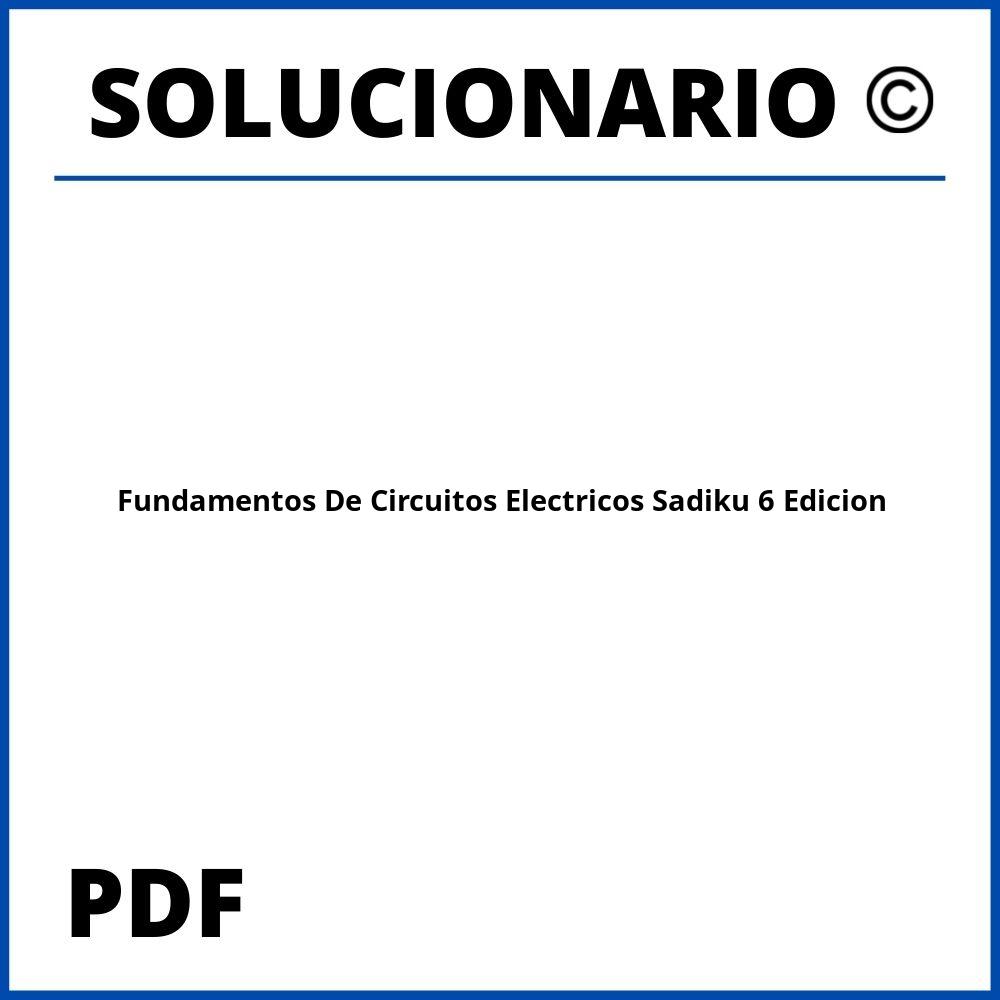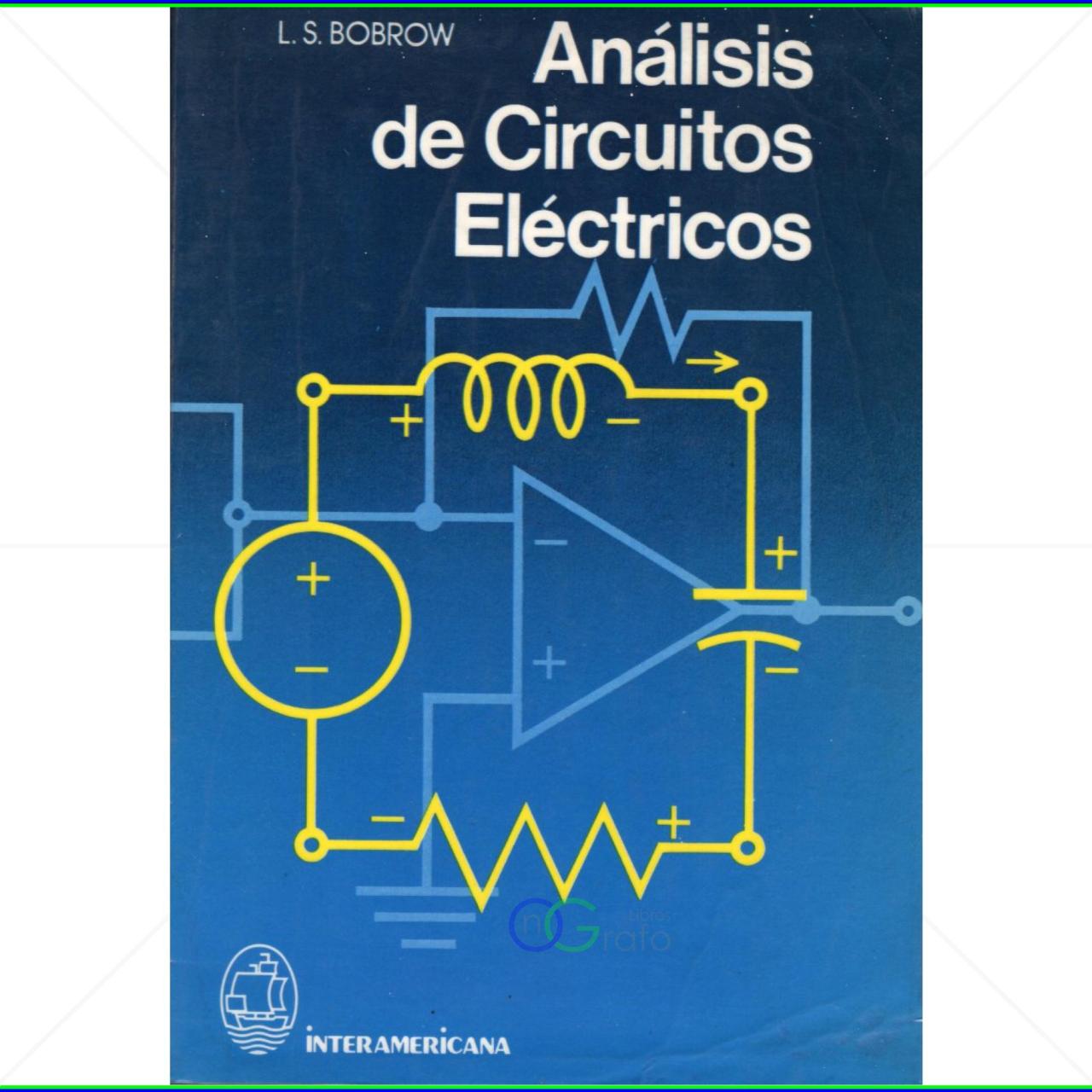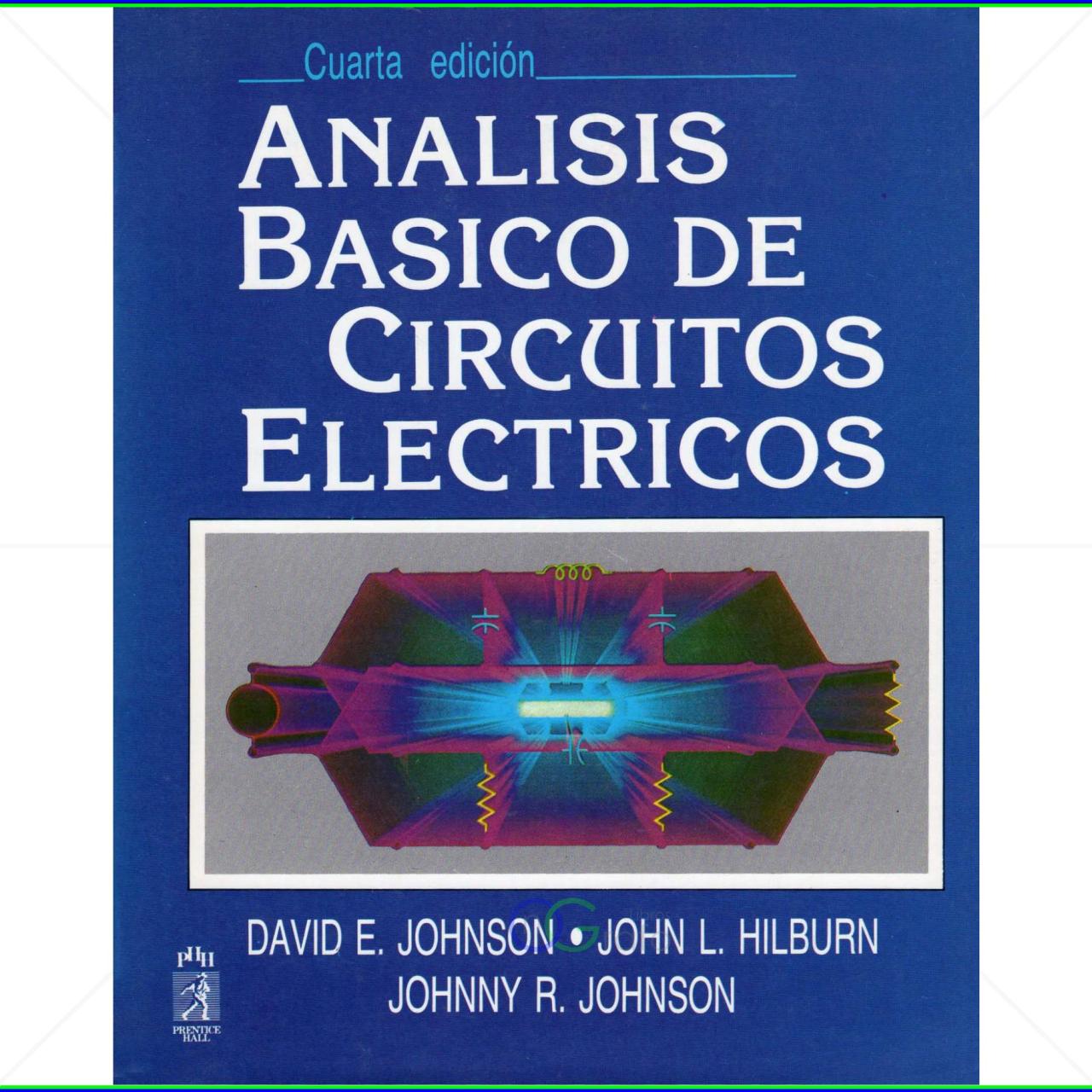Unraveling the mysteries of electric circuits is an exciting journey that has captured the imagination of many. By exploring the ‘Fundamentos de Circuitos Electricos Jr. Cogdell’ PDF, you will delve into the fascinating world of electric circuits and uncover their significance in our technology-driven society.
To begin with, an electric circuit is an intricate network of interconnected electrical components, designed to direct and control the flow of electrons. Components such as resistors, capacitors, and inductors, to name a few, play a crucial role in these circuits.
With this guide, you will not only understand the theory but also learn to analyze and solve real-world circuit problems through engaging examples and illustrations.
Introduction to Electric Circuits

An electric circuit is a pathway for electric charge to continuously flow, driven by an external voltage source. Components in a circuit, such as resistors, capacitors, and inductors, can manipulate the flow of electric charge, which can be measured in terms of current, voltage, and resistance.
Understanding the Importance of Electric Circuits
Understanding electric circuits lays the foundation for numerous technological advancements that power our modern world, including entertainment devices, medical equipment, and communication systems. Familiarity with the principles of electric circuits enables professionals to design efficient and safe devices while minimizing cost and energy consumption.
A Brief History of Electric Circuits
The study of electric circuits began with the invention of the battery by Alessandro Volta in 1800. Since then, researchers and inventors have developed numerous devices and theories, such as Ohm’s law, Kirchhoff’s laws, and the concept of electromagnetism by James Clerk Maxwell.
Key Elements of Electric Circuits
- Current:The flow of electric charge, typically measured in amperes (A).
- Voltage:The force that propels the flow of electric charge, measured in volts (V).
- Resistance:The opposition to the flow of electric charge, measured in ohms (Ω).
Electric circuits consist of a power source, such as a battery or generator, and various components affected by the flow of electric charge. Understanding the interplay among current, voltage, and resistance within a circuit is essential for engineers and technicians working with electrical systems.
Fundamentals of Circuit Components
In the study of electric circuits, understanding the properties, functions, and applications of various components is crucial. This section introduces the basic components used in electric circuits, such as resistors, capacitors, inductors, and more. These elements have unique electrical properties, symbols, unit measurements, and functions, which are essential for analyzing and constructing electric circuits.
Resistors
Resistors are passive components that oppose the flow of electric current. They are used to reduce current, divide voltages, and provide loading in electronic circuits.
- Symbol:
 (Use descriptive information instead of a direct image link)
(Use descriptive information instead of a direct image link) - Unit Measurement: Ohm (Ω)
- Function: Resists the flow of electric current and voltage division
Resistors follow Ohm’s Law: V = I × R, where V is the voltage, I is the current, and R is the resistance.
Capacitors
Capacitors are passive components that store and release electrical energy electrostatically. They can smooth voltage, block DC, or pass AC signals.
- Symbol:
 (Use descriptive information instead of a direct image link)
(Use descriptive information instead of a direct image link) - Unit Measurement: Farad (F)
- Function: Filters, bypasses, stores energy, and decoupling
Capacitors follow the formula Q = V × C, where Q is the stored charge, V is the voltage, and C is the capacitance.
Inductors
Inductors are passive components that store energy in a magnetic field. They are used to couple circuits, block high-frequency signals, and store energy.
- Symbol:
 (Use descriptive information instead of a direct image link)
(Use descriptive information instead of a direct image link) - Unit Measurement: Henry (H)
- Function: Filters, chokes, coupling, and energy storage
Inductors follow the formula L = N × Φ/I, where L is the inductance, N is the number of turns, Φ is the magnetic flux, and I is the current.
Comparing the properties, uses, and applications of these components, resistors have a simple function in reducing current or dividing voltages, while capacitors and inductors store energy. Capacitors store energy electrostatically, making them suitable for filtering and bypassing applications, while inductors store energy in a magnetic field, which is beneficial for filtering and coupling.
Resistors, capacitors, and inductors can be combined to create complex circuits with desired electrical properties.
Series & Parallel Circuits

Series and parallel circuits are two fundamental types of electrical circuits, each having unique properties, advantages, and limitations. They primarily differ in the arrangement of circuit components and the way they distribute voltage and current. Understanding these circuits is essential for analyzing and designing various electrical systems, from simple circuits to complex electronic devices.
Series Circuits
In a series circuit, the components are connected end-to-end, forming a single path for current flow. As a result, the same current passes through each component, while the voltage drops across each component may vary depending on its resistance. The total resistance of a series circuit is simply the sum of the individual resistances.
Total Resistance (Rtotal) = R 1+ R 2+ … + R n
Parallel Circuits
In a parallel circuit, components are connected across each other, forming multiple paths for current flow. Consequently, the voltage across each component is the same, while the current splits among the branches depending on the resistance of each branch. The reciprocal of the total resistance in a parallel circuit is equal to the sum of the reciprocals of individual resistances.
Comparison of Series and Parallel Circuits
The following table summarizes the properties, advantages, and limitations of series and parallel circuits:
| Property/Aspect | Series Circuits | Parallel Circuits |
|---|---|---|
| Current (I) | Same through all components | Different in each branch |
| Voltage (V) | Different across components | Same across all components |
| Resistance (R) | Total resistance is the sum of individual resistances | Reciprocal of total resistance is the sum of reciprocals of individual resistances |
| Advantages |
|
|
| Limitations |
|
|
Understanding series and parallel circuits and their respective properties, advantages, and limitations is crucial for designing and troubleshooting electrical systems. By considering the trade-offs between these two circuit configurations, engineers can develop optimal solutions for various applications and ensure the efficient and reliable operation of electrical devices.
Kirchhoff’s Laws
Kirchhoff’s Laws are fundamental principles in circuit analysis. Named after Gustav Kirchhoff, these laws are essential for understanding the behavior of electrical circuits, enabling engineers and technicians to predict the effects of components and element arrangements within a circuit.
Kirchhoff’s Voltage Law (KVL)
Kirchhoff’s Voltage Law, also known as Kirchhoff’s Second Law, states that the sum of the voltages (or electric potential differences) in a closed loop within a circuit is equal to zero. This fundamental property can be expressed as:
∑ V = 0
In this equation, ∑ represents the sum of all voltages (V) across every component along a closed loop path. Voltage can be positive or negative, depending on the orientation of the component.
Kirchhoff’s Current Law (KCL)
Kirchhoff’s Current Law, also known as Kirchhoff’s First Law, states that the sum of the currents flowing into a node (connection point) in a circuit is equal to the sum of the currents flowing out of the same node. This can be represented by the following equation:
∑ I = 0
In this equation, ∑ represents the sum of all currents (I) flowing in or out of a given node. Note that both KVL and KCL rely on a consistent sign convention, with current flowing into a node being counted as positive and current flowing out of a node as negative.
Applying Kirchhoff’s Laws in Circuit Scenarios
To demonstrate the application of Kirchhoff’s Laws, consider the following simple series-parallel circuit:

To apply KCL, select a node in the circuit. For instance, at the node connecting the 2 Ω resistor, the 4 Ω resistor, and the 3 Ω resistor, the sum of the currents flowing into the node must be zero:
I1- I2 – I3 = 0
Solving for the current through the circuit, assume the voltage source is 10 V, and calculate the resistor values and currents:
- R series = 2 Ω + 4 Ω = 6 Ω
- R total = 6 Ω + 3 Ω = 9 Ω
- I1 = V / R series = 10 V / 6 Ω = 1.67 A
- I2 = I3 = I1 / 2 = 1.67 A / 2 = 0.84 A
To apply KVL, sum the voltages along the loop:
Vs – I1 – R series – I3 – 3 Ω = 0
Substitute the calculated currents and values:
10 V – (1.67 A) – 6 Ω – (0.84 A) – 3 Ω = 0
This confirms that the voltages along the loop are balanced.
Ohm’s Law
Ohm’s Law is a fundamental principle in the field of electricity and electronics, established by Georg Simon Ohm, a German physicist. The law describes the relationship between voltage (V), current (I), and resistance (R) in an electrical circuit. It states that the current through a conductor between two points is directly proportional to the voltage and inversely proportional to the resistance.
Mathematically, it can be represented as:
I = V / R
This simple yet powerful law serves as the cornerstone for understanding, analyzing, and designing various electrical circuits.
Key Components of Ohm’s Law
- Voltage (V):electric potential difference or electromotive force (EMF) measured in units of volts (V). It acts as the driving force for the flow of electrons in a circuit, analogous to pressure in a fluid system.
- Current (I):the rate at which electric charge flows through a conductor, measured in units of amperes (A). Current can also be thought of as the amount of electric charge passing a particular point in a circuit per unit time.
- Resistance (R):the opposition to the flow of electric current in a circuit, measured in units of ohms (Ω). Resistance is a material property, depending on several factors such as temperature, size, shape, and the material itself.
Applications of Ohm’s Law
Ohm’s Law is a versatile and widely applicable concept in electrical and electronic engineering. It serves as the basis for calculating and understanding the behavior of various passive and active components within a circuit. Engineers use Ohm’s Law to:
- Design and analyze power supply circuits to deliver appropriate voltage and current levels to various components in a system.
- Dimensional analysis of semiconductors and other electronic components, enabling the development and optimization of efficient and reliable devices.
- Calculating power dissipation and efficiency of various circuits, contributing to the thermal management of electronic systems and devices.
- Analyzing and predicting circuit behavior under various operating conditions and environments.
- Creating simulation models for complex electronic systems, facilitating the design and optimization process.
Ohm’s Law and Circuit Design
Understanding and applying Ohm’s Law is crucial for successful circuit design and analysis. By employing Ohm’s Law, engineers can ensure the proper operation of electronic circuits, optimize power consumption, and minimize losses and heat dissipation. With the aid of Ohm’s Law, designers are better equipped to anticipate and tackle potential issues, ultimately leading to the development of robust and efficient electrical and electronic systems.
Power & Energy in Circuits
Understanding power and energy is crucial in electronic circuits as they are the primary measures of work done by a circuit. Power can be defined as the rate at which energy is transferred, used, or converted. Energy, on the other hand, is the capacity or ability to do work, measured in joules (J).
Understanding Power and Energy
Power (P) is the product of voltage (V) and current (I) in a circuit, represented as P = VI. It is measured in watts (W). Energy is calculated by multiplying power by time, represented as E = Pt, where E is energy, P is power, and t is time.
Power Calculations and Efficiency Considerations
When calculating power in a circuit, it’s essential to consider the efficiency, which is the ratio of power output to power input. An efficient circuit is one that converts most of its input power to output power. Efficiency can be expressed as a percentage by multiplying the power output by 100 and dividing by the power input.
Comparing AC and DC Circuit Power
Alternating current (AC) and direct current (DC) are the two main types of electrical currents. AC power varies in voltage and current over time, while DC power remains constant. AC power is measured in either watts (W) or volt-amperes (VA), while DC power is measured only in watts (W).
AC power is typically more efficient than DC power because of the ease of voltage and current transformation.
It’s important to note that AC power is more commonly used in households and industries due to its ease of transmission over long distances.
Solving Circuit Problems

Solving circuit problems is the process of analyzing and determining the properties of an electric circuit, given a particular set of conditions. It is the core of circuit theory and helps engineers and technicians understand and design electronic systems.
This section will discuss various techniques for solving circuit problems, with an emphasis on the step-by-step process in solving complex circuits. We will provide examples and walk through the solution using HTML tables, making the content intuitive and engaging for the reader.
Methods for Solving Circuit Problems
Before diving into solving specific circuit problems, it is essential to be aware of the various techniques for addressing electrical circuits. The most common methods are:
-
Ohm’s Law
-
Kirchhoff’s Laws
-
Nodal Analysis
-
Mesh Analysis
-
Superposition Theorem
These techniques will be discussed in detail, with the focus on applying each method to various circuit configurations. Understanding these methods will improve problem-solving abilities and streamline the analysis of complex electrical networks.
Example: Solving a Circuit Problem Using KVL, KCL, and Ohm’s Law
| Node | Voltage (V) |
|---|---|
| a | Va |
| b | Vb |
| c | 0 V |
Consider the circuit shown with the given node voltages V aand V b. Using Kirchhoff’s Voltage Law (KVL) and Kirchhoff’s Current Law (KCL), the following steps should be executed:
-
Apply KCL to nodes a and b.
-
Apply KVL to each loop.
-
Solve the resulting simultaneous equations for the unknowns.
The detailed solution is illustrated in the following table:
| Step | Expression | Result | |
|---|---|---|---|
| 1 | a | I1 + I2 = 0 A | I1 =
|
| b | I2+ I 3= 0 A | I2=
|
|
| Result: | I1= I 3 | ||
| 2 | Loop 1 | 6 V
|
Substitute I1 =
|
| Loop 2 | -3 I2+ 6 V = 0 V | I2= 2 A | |
| Result: | I1=
|
||
With the given circuit information and using KVL, KCL, and Ohm’s Law, the current flowing through the circuit can be calculated, leading to a better understanding of the underlying electrical relationships within the network.
Summary
Understanding electric circuits is the foundation for many technological innovations and advancements. With the knowledge gained from the ‘Fundamentos de Circuitos Electricos Jr. Cogdell’ PDF, you will have the power to bring your ideas to life, paving the way for groundbreaking inventions and improvements in countless fields.
So, embark on this enlightening journey through the captivating realm of circuits!